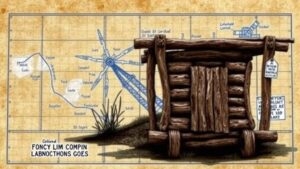Uncovering Hidden Relics with City Blueprint Archives
Uncovering Hidden Relics with City Blueprint Archives
The past remains buried beneath the surface of modern urban landscapes, often concealed by layers of development and industry. To unearth these hidden relics, researchers and archaeologists increasingly turn to city blueprint archives. These archives serve as essential tools that not only document the physical changes in cities over time but also provide insights into their cultural, social, and historical contexts. This article explores the significance of city blueprint archives in historical exploration and archaeological research, highlighting specific case studies, data, and methodologies.
The Role of City Blueprint Archives
City blueprint archives include maps, schematics, and planning documents created by city planners, architects, and government officials. These artifacts offer a glimpse into the developmental phases of urban areas, making them valuable for identifying locations of historical importance. As cities evolve, blueprints capture the intended designs, zoning regulations, and infrastructural developments critical in understanding their past.
Historical Significance
The utilization of city archives is not a new phenomenon. For example, in Chicago, the blueprint archives from the late 19th century reveal how the city transformed from a small trading post in the early 1800s to a bustling metropolis. A study by the Chicago History Museum indicates that between 1880 and 1920, the citys population grew from 503,000 to over 2.7 million, necessitating a vast redesign of its blueprint rules to accommodate urban needs (Source: Chicago Historical Society, 2019).
Case Study: The Preservation of Historical Districts
One remarkable example of using city blueprint archives to uncover hidden relics is the preservation efforts in Savannah, Georgia. The original blueprints from the late 18th century detail the city layout, which emphasizes public squares and historic buildings that have persisted through time. Historic Savannah Foundation identified areas slated for development that housed buried structures dating back to the colonial era by cross-referencing blueprints with archaeological surveys. This research has led to the protection of essential historical districts, securing funding for restoration projects (Source: Historic Savannah Foundation, 2020).
Modern Applications
Today, cities such as New York and London continue to leverage blueprint archives to assist in modern urban planning and archaeological endeavors. Geographic Information Systems (GIS) technology enables researchers to layer historical blueprints over current maps, allowing for precise visualization of changes over time. This methodology enhances the understanding of urban sprawl, community settlements, and even landscape ecology.
For example, in New York City, researchers from Columbia University utilized archival blueprints along with GIS to track the transformation of neighborhoods in Harlem from the 1920s to the present day, revealing shifts in demographic patterns and social structure (Source: Columbia University, 2021). The integration of these historical documents with modern data analytics provides a rich narrative, helping to inform both policymakers and historians.
Challenges and Considerations
Despite the potential benefits, several challenges arise when utilizing city blueprint archives. One primary concern is the accessibility of these documents, as many cities do not digitize or maintain comprehensive collections. Also, interpreting blueprints requires specialized knowledge in architectural design and historical context.
Also, over-reliance on blueprints may lead to misinterpretations if not supplemented with on-ground archaeological evidence. A study conducted by the Journal of Archaeological Method and Theory warns against viewing blueprints as fully accurate representations of historical landscapes due to potential discrepancies in measurement and intended designs during planning (Source: Journal of Archaeological Method and Theory, 2022).
The Future of Blueprint-based Archaeology
The future holds promising prospects for the integration of technology and city blueprint archives in uncovering hidden relics. The increasing availability of digital blueprints facilitates broader access for researchers, allowing for collaborative efforts across disciplines. fusion of traditional archaeological practices with digital modeling and analysis can lead to profound insights into urban history.
Conclusion
City blueprint archives are invaluable resources for historians and archaeologists working to unveil the concealed narratives of urban settings. By cataloging historical changes and providing a structured insight into city planning, these archives can effectively guide archaeologists to unearth hidden relics, enhancing our understanding of past human activities and societal structures. The examples provided emphasize the need for continued investment in preserving these archives and integrating advanced technologies for future research endeavors.
- Investment in digitization initiatives for easier access to blueprints.
- Cross-disciplinary approaches combining archaeology, urban studies, and technology.
- Engagement with local communities to share findings and promote heritage tourism.
Ultimately, the collaborative effort of historians, urban planners, and archaeologists is essential in ensuring that our cities continue to tell the stories of their past through the relics they harbor.

